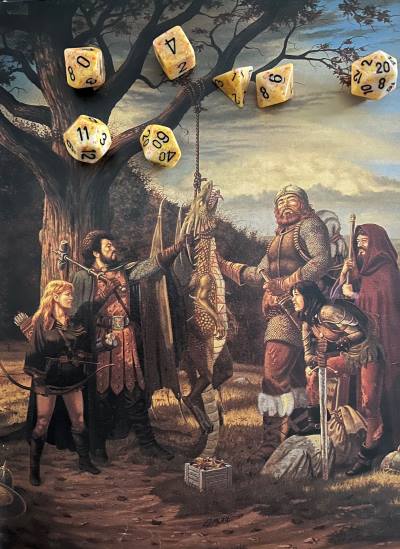For every player of Dungeons & Dragons, the Beholder stands as one of the most iconic and formidable monsters. With its numerous eye stalks and a central eye capable of devastating magical powers, the Beholder is a force to be reckoned with. So much so, that it graces the cover of the Monster Manual a core book of the game. In addition to scaring players throughout the ages, this fantastical creature also offers valuable leadership perspectives beyond tabletop gaming. Let’s delve into three leadership insights that can be drawn from the enigmatic, many eyed, Beholder.
Visionary Leadership
Beholders are known for their multiple eyes, each possessing a unique magical ability. This diversity of vision allows them to consider a wide range of perspectives simultaneously. In leadership, the ability to see various angles and possibilities is equally crucial. A visionary leader should be capable of recognizing diverse viewpoints within a team, fostering an environment where creativity and innovation can thrive.
Moreover, the Beholder’s central eye represents a focused and intense vision. Woe is the adventurer who becomes the focus of this central orb. Leaders can learn to hone in on their goals, maintaining a clear and unwavering focus despite the distractions that may arise. Just as a Beholder combines various visions to comprehend its surroundings, leaders must integrate the diverse talents and insights of their team to navigate the challenges ahead.
Lesson: Leaders should cultivate a visionary approach by embracing diverse perspectives and maintaining a focused, unwavering vision for their team.
Adaptive Leadership
Beholders are known for their intelligence, adaptability and resourcefulness. With a vast array of magical abilities at their disposal, they can dynamically respond to different situations. Making them an extremely dangerous enemy. In leadership, the capacity to adapt to changing circumstances is crucial. Leaders should be flexible, capable of adjusting strategies and approaches to meet the evolving needs of their team and organization.
The Beholder’s magical eye stalks symbolize the need for a diverse skill set. Just as a Beholder relies on various powers to confront different challenges, leaders should cultivate a range of skills to address the multifaceted issues that arise within a team. This adaptability ensures that a leader remains effective in diverse situations, fostering resilience among team members.
Lesson: Leaders should embrace adaptability, continually refining their skill set to navigate the ever-changing landscape of leadership challenges.

Balancing Control and Delegation
Beholders are notorious for their desire for control, often dominating and directing their minions with an iron grip. However, effective leadership requires a delicate balance between control and delegation. While maintaining a degree of control is necessary for organizational coherence, leaders must also empower their team members by delegating responsibilities and trusting them to contribute their unique skills.
The Beholder’s control is represented by its central eye, while the eye stalks symbolize delegated tasks. Leaders should emulate this balance, recognizing when to take charge and when to empower others. By doing so, leaders foster a collaborative and trusting environment, where each team member feels valued and capable of making meaningful contributions.
Lesson: Leaders should strike a balance between control and delegation. Empowering team members while maintaining a cohesive and focused direction for the organization.
Final Thoughts
In Dungeons & Dragons, the Beholder serves as more than just a formidable adversary. Its unique characteristics offer valuable leadership insights that can be applied in the real world. By embracing the perspectives of visionary leadership, adaptability, and the delicate balance between control and delegation, leaders can draw inspiration from this mythical creature. Letting them navigate the complex challenges of leading a team toward success. Just as a Beholder surveys its surroundings with multifaceted vision, leaders can leverage these lessons to navigate the intricate landscape of leadership with wisdom and finesse.
For more info on the Beholder and its place in Dungeons and Dragons check out this site.



